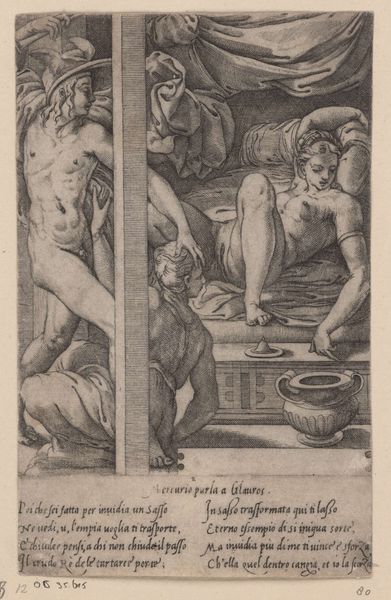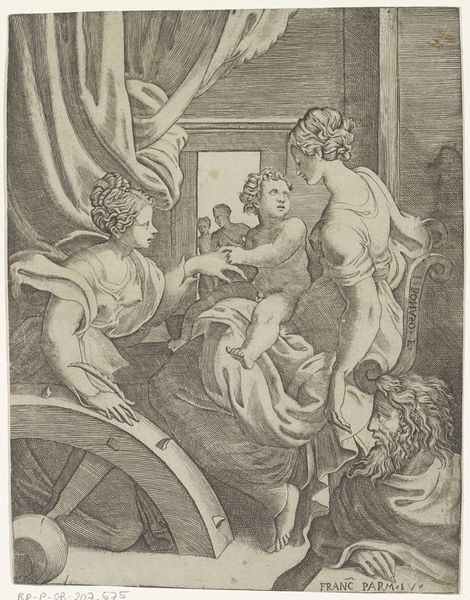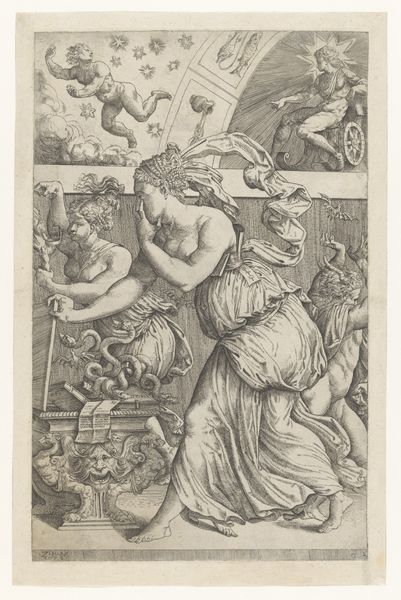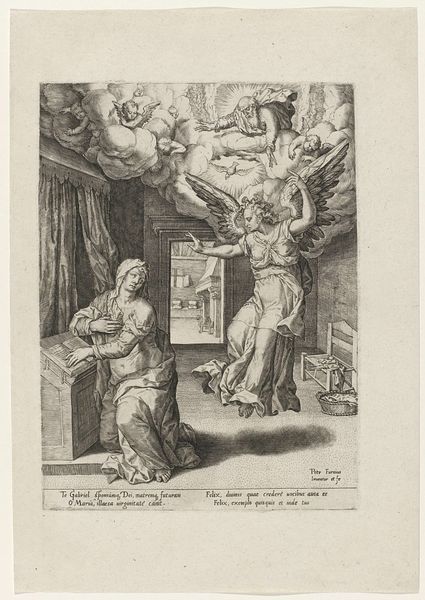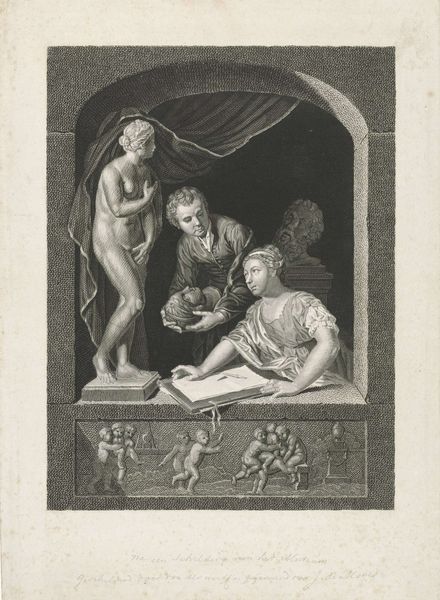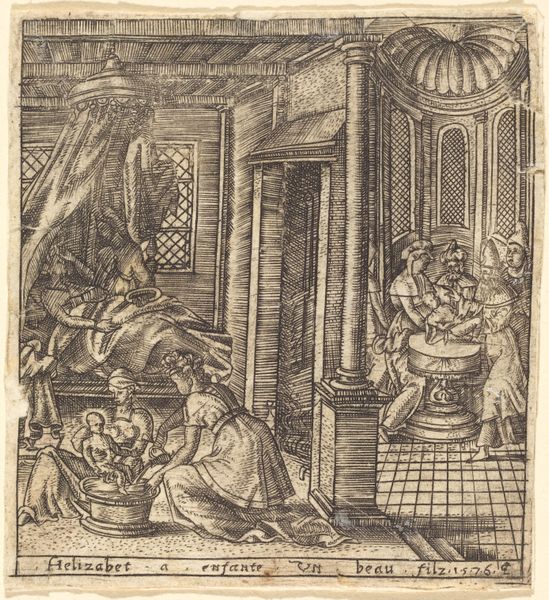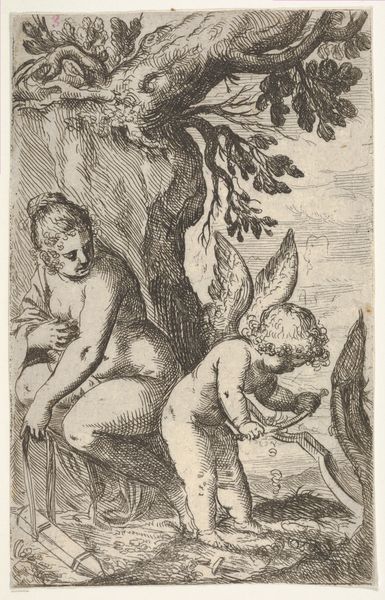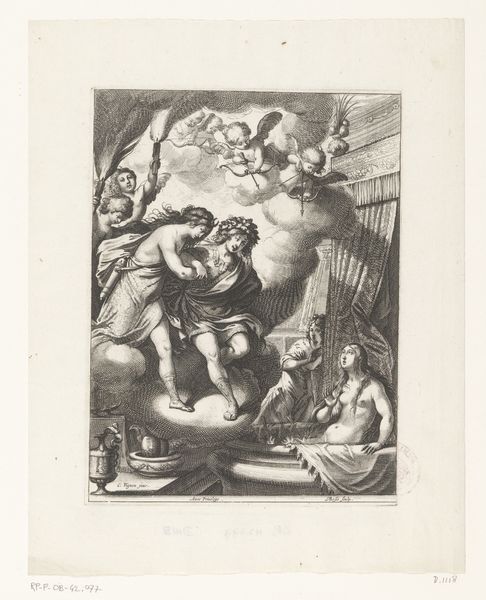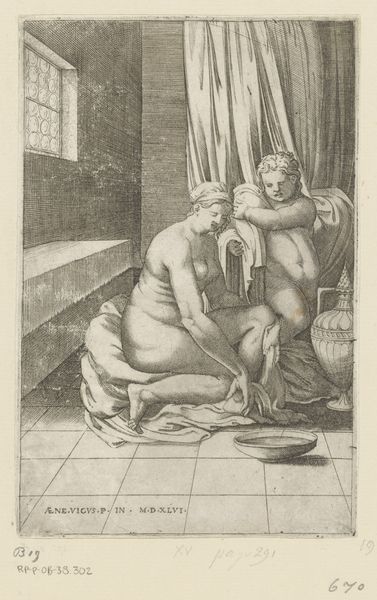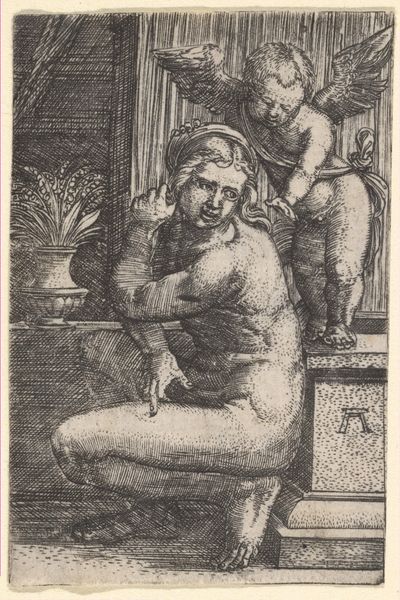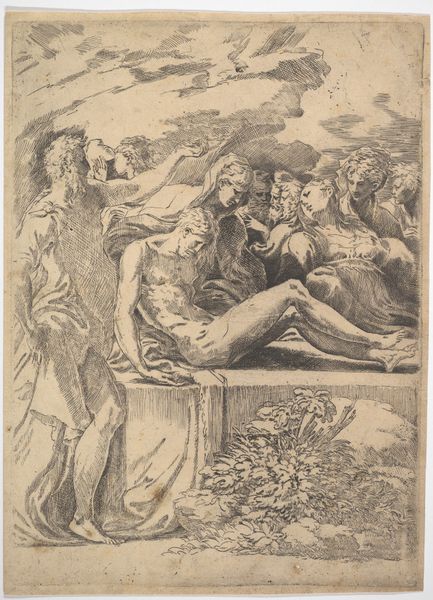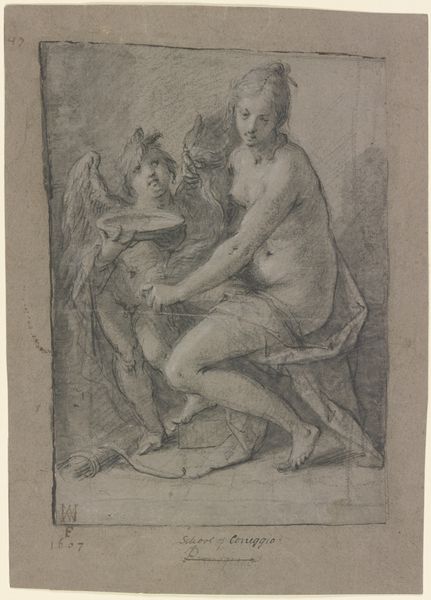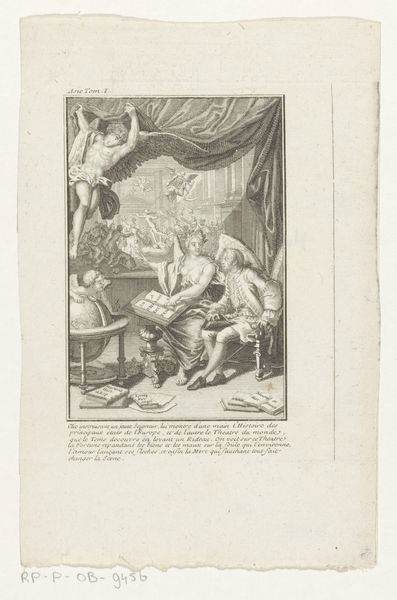
print, engraving
# print
#
mannerism
#
figuration
#
history-painting
#
nude
#
engraving
Dimensions: 212 mm (height) x 138 mm (width) (Plademål)
Editor: We're looking at Jacques Androuet's engraving, "Merkur besøger Herse," created sometime between 1540 and 1585. It's intriguing how the artist depicted the scene, separating Mercury and Herse with what looks like a framing device. What's your interpretation of the work? Curator: Looking at this print, I see an interesting intersection of mythology and production. This engraving isn’t just about depicting a narrative; it is an object made through labor and the movement of material. We need to ask, how does the act of engraving itself—the physical process of creating lines on a plate—impact the storytelling? Consider, too, the market for these prints. Editor: The printmaking process is fascinating, transforming narrative into commodity. Could the details of labor and materiality here also inform how we view the depicted themes of desire or divine intervention? Curator: Absolutely. The sharp, precise lines created through engraving lend a certain formality. Is this formality a commentary on the divine realm versus human experience? Is the act of replication through printing itself mimicking the power dynamics in the narrative, where Mercury, as a god, holds power over mortals? Editor: I hadn't considered that! The production could mimic the themes, underlining ideas of access and dissemination of stories like these... Thanks, that's given me a lot to think about. Curator: Indeed. Looking at the physical making opens avenues to interpreting its cultural significance.
Comments
No comments
Be the first to comment and join the conversation on the ultimate creative platform.
